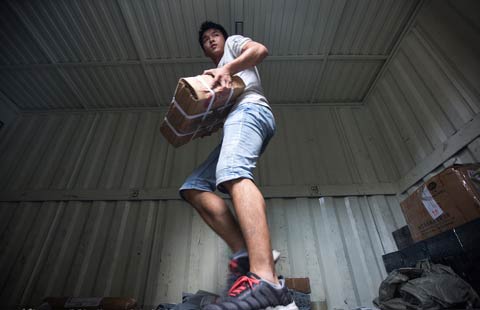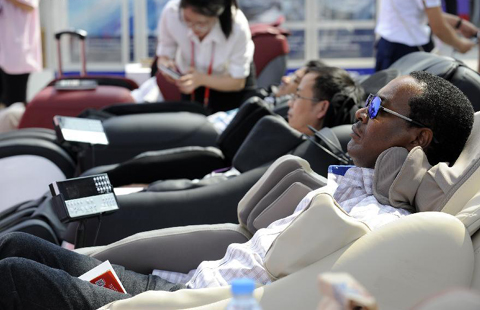Beijing's office rent to stabilize in the coming year
By Hu Yuanyuan (chinadaily.com.cn) Updated: 2014-10-16 17:29Office rents in Beijing are expected to stand at current levels until the market welcomes another supply peak between 2015 and 2018, international real estate consultancy firm Savills said in a report on Thursday.
|
 |
|
 |
The under-supply situation in Beijing's grade A office market over the past four years is expected to change in the last quarter of 2014. Six new projects are scheduled to enter the market in the last three months, bringing the total office gross floor area (GFA) of 335,000 sq m, nearly 50 percent more than the annual supply between 2010 and 2013.
Given all the projects will be located in traditional business districts such as CBD and Lufthansa and hot emerging areas such as Wangjing, most projects have achieved relatively healthy pre-commitment rates of between 20-50 percent. The citywide vacancy rate is expected to largely stabilise within 5 percent, still the lowest level across China, according to Savills.
Office rents appreciated for the second consecutive quarter by 0.9 percent quarter-on-quarter to 316.8 yuan ($51) per sq m per month, representing a year-on-year growth of 1.0 percent. Each submarket witnessed a rental growth ranging from 0.3 percent to 1.9 percent, supported by limited new supply combined with growing demand.
Retail market
Retail sales increased with a rebound of 8.0 percent year-on-year to 574 billion yuan in the first eight months of 2014. Meanwhile, online retail sales continued to post aggressive growth of 56.6 percent in the same period.
The market continued to be decentralised with new supply coming from non-prime and even suburban areas. Two shopping centres - Lippo Plaza BHG Mall and Roosevelt Shopping Centre held their grand openings and showed high occupancy rates in the third quarter, adding 80,000 sq m and 67,000 sq m to the market respectively. These were also the first mid- to high-end shopping centre projects in the BDA (Lippo Plaza BHG Mall) and Tongzhou (Roosevelt Shopping Centre) areas.
Ito Yokada recently closed its Beiyuan store located in Chaoyang district; this followed the closure of their Wangjing store in the previous quarter. It is expected they will close the Xizhimen branch in 2015. As a result, total mid- to high-end retail stock grew moderately to 9.1 million sq m.
F&B retailers continued to be the major demand driver in the third quarter, this was attributed to landlord's eagerness to introduce such retailers to attract footfall. Fast-fashion and mid-end luxury brands continued their entry and expansion plans in an attempt to gain market share from the growing middle-class and improving brand awareness of local residents. In contrast, luxury retailers continued to be rather cautious about their expansions.
Despite the new supply, prime shopping mall citywide occupancy rates still increased by a further 0.6 of a ppt quarter-on-quarter in this quarter to 95.5 percent. This was up 3.9 ppts year-on-year, the highest occupancy rates seen in the past five years.
With the main drivers of demand stemming from F&B and lifestyle retailers with relatively low rental budgets, Beijing prime shopping mall first floor rents witnessed a decline in rent growth rates; up only 0.3 percent quarter-on-quarter to 915.2 yuan per sq m per month, representing a year-on-year growth of 2.0 percent, the slowest during the past four years. However, prime retail areas such as Xidan and Sanlitun still accounted for the highest rental growth rates of 9.1 percent and 6.3 percent respectively.
Forecast
Six projects are scheduled to debut in the fourth quarter of 2014. All positioned to be shopping centres, they will add a total retail GFA of approximately 0.7 million sq m.
While new projects are to be operated by experienced landlords and enjoy convenient access to metro lines, to secure healthy pre-commitment rates landlords are still having to compromise on rents and offer other incentives to attract suitable tenants. This is given to the projects non-prime locations and immature retail ambiance.
Citywide occupancy rates are expected to witness a moderate decline, largely a result of vacant space in new projects. Overall rental growth should further slow down as landlords in non-prime markets are pressured to make sacrifices on either face rents or other leasing terms to attract suitable retailers.
- Second hearing begins in Apple patent case
- China power use rises 2.7% in September
- UBS (China) opens sub-branch in Beijing
- China stocks close lower Thursday
- China FDI, outbound investment post upturns
- Much can be done to improve US-China trade ties
- Banks lower down payment for second-home buyers
- Historic corners of an ultramodern metropolis
















